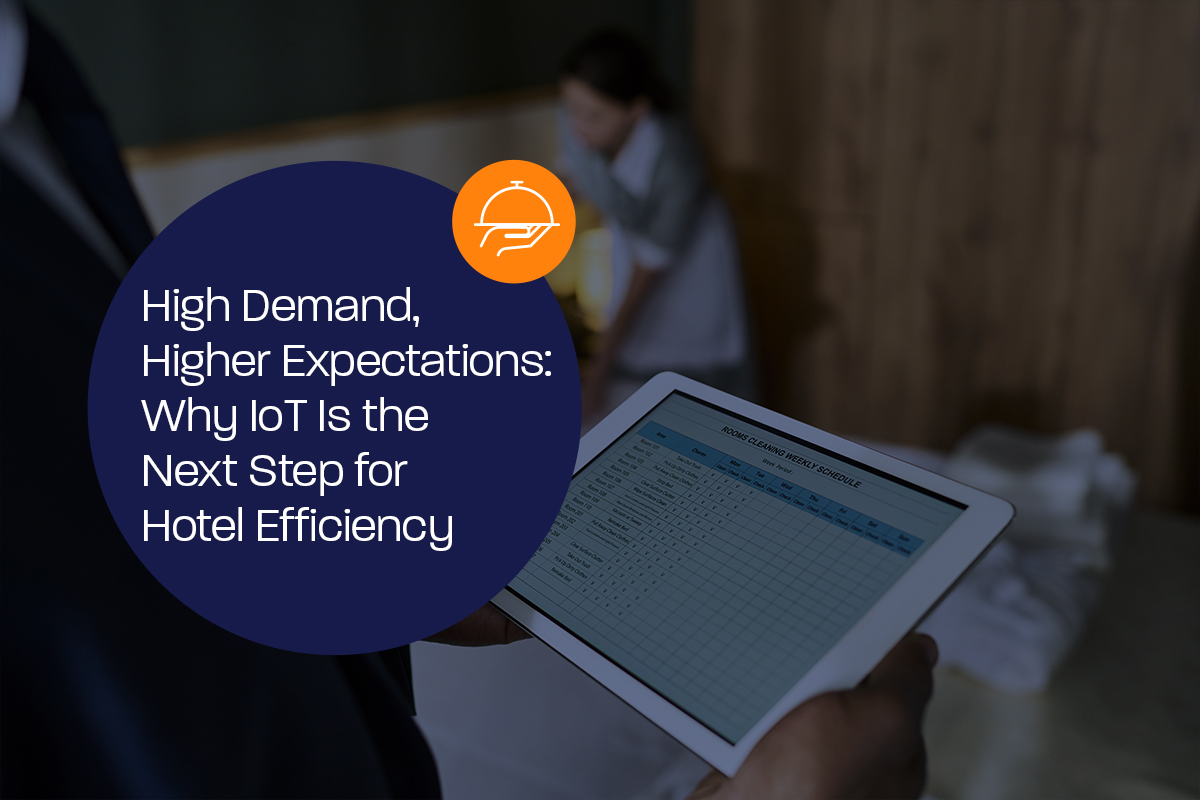The US hospitality industry is poised to see continued improvement heading into 2023, with crucial metrics inching closer and, in some cases, set to exceed pre-pandemic levels. According to a study by PwC, annual occupancy will increase to 63%, the average daily rate (ADR) will increase by nearly 17%, and the revenue per available room (RevPAR) will be up 28%. Additionally, gross operating profit per available room (GOPPAR) will reach its highest level since COVID-19.
The road to recovery hasn’t been easy for hoteliers but uncovering innovative ways to bounce back with the Internet of Things (IoT) is. The hospitality C-suite has been aware of IoT’s positive impact on business, which explains why 70% of hospitality executives have active IoT projects, far higher than the 48% average in other industries. Of those executives, most (53%) leverage IoT to operate more efficiently, while 33% are interested in modernizing their brand and adding new capabilities.
With more than half of execs utilizing IoT for operational efficiencies, hoteliers can look to double down on IoT projects to potentially impact GOPPAR levels as a way to control costs while keeping guest satisfaction high. When you consider, for example, that a 10 percent reduction in energy consumption has the same financial effect of increasing the ADR at full-service hotels by $1.35 or that $13 billion in insurance claims is paid annually from water damage-related claims, IoT is primed to play a tremendous role in improving GOPPAR.
The traditional use cases hotel executives are aware of—energy management, facilities management, and occupancy monitoring—are especially well-suited for operational efficiencies. Consider that IoT-connected sensors on HVAC systems help maintain room air quality by ensuring optimal equipment performance and enabling predictive maintenance. When sub-optimal ventilation or air filtration is detected, facilities managers are notified in real-time to remedy the situation before it negatively impacts air quality. In addition to maintaining air quality, these solutions can also extend equipment life through better maintenance.
New and emergent use cases can also be solved with IoT. For instance, there is increasing regulatory pressure for hoteliers to advance employee safety. In some cases, cities and states across the US require employers to equip staff with a rapid response solution—like the one PwC offers, which runs on MachineQ’s network connectivity platform. With the PwC solution, employees are outfitted with a wearable push button that can discretely signal they need assistance when triggered. It provides security staff with the employee’s precise location so that help can be dispatched quickly. To date, many hotels have been slow to adopt rapid response solutions because many options in the market are point solutions, which are costly to deploy and do not allow for added value beyond their single implementation. However, with the PwC offering, enterprises benefit from having the MachineQ network connectivity platform in place, enabling them to add additional IoT use cases with the same infrastructure investment for increased ROI.
The projection for hoteliers is promising as more people are venturing out for business-related or personal travel. As business returns to normal, hotel execs will continue leveraging IoT for continued impact on revenue.
Click here for a fuller look at IoT solutions benefitting hoteliers. And, if you’re a hotel executive heading to HITEC June 27-30, stop by the MachineQ demo space in the Comcast Business booth (booth #1315) to learn more about how IoT can help you.








